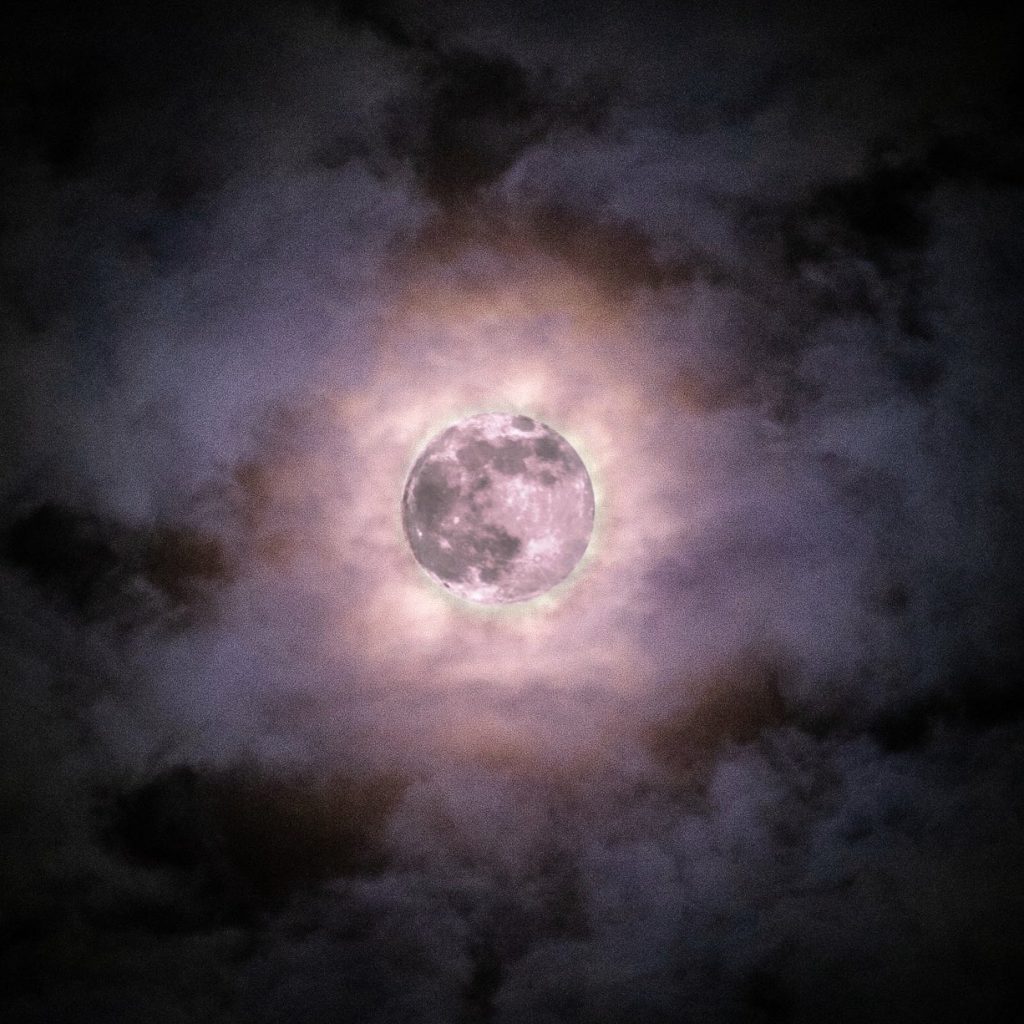Skywatchers and stargazers are delighted after witnessing the divine event of Supermoon on April 7, 2020. It was this year’s largest Super moon where natural satellite of Earth became closest to our planet and appeared in its largest and brightest from for the year 2020.
The Super Pink moon is what astronomers call as a perigean full moon. At this time, the moon is at its closest distance to earth at 356,907 km away. The full moon of April is typically called the pink moon according to old Native American culture as well as is truly no indicator of the colour the moon will take.
The nearby perigee (the point in the orbit of the moon or a satellite at which it is closest to the earth) Full Moon seem around 14 percent bigger and 30 percent brighter than Full Moons that occur near the apogee (the point farthest from Earth) in the Moon’s orbit. Noah Petro, a research scientist from NASA’s Goddard Space Flight Centre, stated that the supermoons are a great chance to start looking at the moon, not just that once but every opportunity you have!
As per the US space agency NASA, the Moon will appear full for three consecutive days, so if anyone missed the chance to witness the moon in its largest form, can enjoy the beauty of our natural satellite for coming two days, i.e., till April 9, 2020.
After watching the beauty of Super Pink Moon, people started capturing stunning photos and started sharing it on social media. We have accumulated some of the best pics taken from around the globe.
Good morning; views of last night's supermoon were rather spoiled by cloud, but it was still interesting to see; hope you all have pleasant days! pic.twitter.com/6YV2Ayzz6R
— Chris Hall (@christop_hall) April 8, 2020
Managed to pick up a slight shade of pink with this cracker of a #supermoon #pinkmoon pic.twitter.com/ZWRS83IXD0
— Stuart McCafferty (@stumcc761) April 7, 2020
A beautiful pic of pink supermoon with Brighton Pier in foreground ❤️😊 pic.twitter.com/nLeuFcgOAk
— mike roberts-millar 🇪🇺 (@wisheart12) April 8, 2020
https://twitter.com/zachyjooo/status/1247735346814574592?ref_src=twsrc%5Etfw%7Ctwcamp%5Etweetembed%7Ctwterm%5E1247735346814574592&ref_url=https%3A%2F%2Fwww.cnn.com%2F2020%2F04%2F08%2Fworld%2Fpink-supermoon-scli-intl-gbr-scn%2Findex.html
I went outside and actually managed to get some images of the rare “Pink Supermoon”-enjoy📸
-IG: @ rawfocvs pic.twitter.com/goFsqv8RJJ— thatphotographerRudy (@rudym_7) April 8, 2020
Tonights supermoon from Highland Light in Truro #capecod pic.twitter.com/R4Ev5J6ns7
— Nick Haveran (@nhaveran) April 8, 2020
Why is it called Pink Moon?
When it comes to naming a full moon, the procedure generally depends on the indigenous American regions and also periods. The name ‘Pink Moon’, as a result, refers to the pink blossom (Phlox subulata) that grows in spring in the east of North America and also not the colour of the Moon, as per a Farmer’s Almanac report. The full moon around this of the year is additionally referred to as Sprouting Grass Moon, the Egg Moon, as well as the Fish Moon.
Super Moons aren’t unique as they happen around once every 2.7 years because the number of days in a new moon to new moon is a bit less than the usual calendar month. A sequence of 12 lunations adds up to 354 days, against the 365 days in a year. The difference adds up over time until year will have 13 lunations as opposed to 12. 2018 will feature two Blue Moons one in January and one in March. The distance between the Earth and the moon changes continously. Every time the moon orbits the Earth, in 29.5 days, it will reach close to the Earth, and occasionally the adjacent location will be close to the date of the full moon i.e., a supermoon.
Michelle Nichols, administrator of public observing at Chicago’s Adler Planetarium states that when you look at it near the horizon, there’s an optical illusion. When the supermoon is witnessed to the low extent, it appears vast. This is known as the moon illusion, and the moon has not risen, it is a trick your eyes are playing on you. Despite the notable difference between a regular full moon and a supermoon, it is not as significant as it seems.
Nicholas says that it is an extraordinary chance to get people excited about science and astronomy. The supermoon’s moon is a little bigger and brighter, but people can’t eternally tell the difference, and it is a great reason just to go out and gaze at the sky.
For those who have missed a sight of the last supermoon of 2020, can view it till April 9, taking images to preserve the moment can be comfortable. Bill Ingalls, a NASA photographer, tells that those catching the event by their phones have to focus on the proper light balance. “Tap the screen and retain your finger on the moon to lock the focus. Then slide your finger up or down to darken or lighten the exposure.”
For those using DSLR cameras, Ingalls recommends utilizing another subject in the image, like a person, pet or landmark to relate to the size of the moon. “Usually I find when the moon is near the skyline I have a better chance of combining it with a landmark or person, but there are no restrictions, and sometimes a tall object can be utilized when the moon is at a very high edge.”
While the supermoon can come out looking larger in photos than it does when gazing at it in person, Nichols asserts it is an unlikely chance to get people excited about science and astronomy. The supermoon receives headlines because the moon’s a little bigger and a little brighter, but people get frustrated that they can’t eternally tell the difference. Still, it’s a great reason just to go out and look at the sky.


